Tainted Railroad Honey Pot
This essay offers a summary of the recent railroad financial “investments” made by the Biden administration. Spotlighting the underbelly of this quixotic quest are the ongoing challenges.
What we’re really doing is raising the bar on what we can imagine. Imagine a world where you and your family can travel coast to coast without a single tank of gas on a high-speed train close to as fast as you can go across the country in a plane.
Joe Biden
Words: 2,898 ~ Read time: 11 min
Executive Summary
This essay provides an overview of recent railroad investments by the Biden administration. It focuses on the challenges faced by the Savage Tooele Railroad (STRR) in Utah. The STRR is a small private railroad. It aims to rejuvenate a 6-mile track but encounters regulatory hurdles. This exemplifies the complexities of modern construction.
Despite the STRR’s modest scale, the regulatory review process could not have been more burdensome. This has led to delays and the loss of potential rail customers. The essay then highlights the Biden administration’s large financial allocations, totaling $30 billion for high-speed passenger rail projects nationwide. The projects vary in scope. One example is the Pennsylvanian Rail Modernization Project, which aims to enhance tracks and signals for Amtrak’s service.
The essay raises concerns about the efficiency of the regulatory process. It notes the stark contrast between railroad and trucking projects. It emphasizes the need to streamline regulatory reviews for railroads. This will ease infrastructure development. Additionally, the essay questions the allocation of funds to money-losing passenger trains. It advocates for a focus on projects with significant environmental advantages over trucks.
Introduction
This essay summarizes the recent railroad financial “investments” made by the Biden administration. Spotlighting the underbelly of this quixotic quest is the ongoing challenges faced by the Savage Tooele Railroad in Utah. This small private railroad is grappling with obstacles in constructing just a few miles of track. The government, which aspires to invigorate high-speed passenger rail initiatives, hinders them.
Savaged by the Government
The Savage Company is a well-established transportation and logistics firm. It has a 75-year operational history and has introduced its latest venture, Savage Railport. Tooele, Utah, is the location of the new facility. This trans-load facility is 40 miles west of Salt Lake City. It serves Salt Lake City and its surrounding markets. It offers versatile capabilities for handling a diverse range of commodities. These include hazardous and non-hazardous materials. The facility features 45 railcar spots. It has warehousing, ground storage, conveyor systems, and railcar capabilities. It links to Union Pacific rail lines. This enables material transfer between trucks and railcars. Savage supports both nationwide and international deliveries. Savage manages 50 rail terminals across the United States, Canada, and Mexico. These include both customer-owned and company-owned facilities.
The proposed Savage Tooele Railroad (STRR) sheds light on the complexities of modern construction. Savage aims to rejuvenate the abandoned six-mile Warner Branch in Tooele County, Utah, courtesy of Union Pacific. Plans include restoring a quarter mile of dismantled track. They will also add five miles of new track within Lakeview Business Park’s 800-acre property. The park is currently under construction in Grantsville, southwest of Salt Lake City.
The envisioned 11-mile STRR aims for a modest operation. It hopes to feature a single 12 to 20-car train traveling in each direction on weekdays. The train will travel between the business park and Union Pacific’s Shafter line. The interchange between the two railroads is at Burmester. Despite its small scale, the project faces a complicated review process.
The saga began in September 2021. Savage sought an exemption from the Surface Transportation Board (STB) review.1 They wanted it for the Warner Branch acquisition and for the associated construction. However, the board raised inquiries, leading Savage to refile in June 2022. Subsequently, they determined that the transaction required STB approval and an environmental assessment.
In January 2023, Savage made a reasonable plea for the board to decide on the transportation merits while the environmental review was ongoing. Savage argued that such a decision would help potential business park tenants, who could make informed decisions about including rail in their construction plans.
The regulatory uncertainty had already resulted in the loss of one potential rail customer. Another is facing a looming design deadline for a $125 million cold storage warehouse. This facility included $7 million in rail-related infrastructure hung in the balance, contingent on the STB’s decision. Despite these implications, the STB, in a 3-2 decision in March 2023, rejected Savage’s request.
In September 2023, Savage released the draft environmental assessment. It spans an incredible 626 pages, roughly 57 pages per mile, for an 11-mile railroad. Only two short trains would operate daily. The thoroughness is notable. Yet, it raises questions about the necessity of scrutinizing every detail. This is for a modest project. It involves restoring and extending a simple branch line. The line is within an already-developing business park. The draft environmental assessment confirmed this project won’t cause significant environmental impacts. Approval from the STB is likely, albeit with inevitable delays.
This stands in stark contrast to the streamlined processes that trucking projects enjoy. A parkway extension is set to improve access to the Lakeview Business Park. Project managers aim to progress from design and environmental review in 2024 to construction in 2025. The playing field appears uneven, with freight railroads facing challenges that tilt in favor of trucks.
Meanwhile, Behold the High-Speed Honey Pot
On December 8, 2023, the Biden Administration announced special rail funding. It was about releasing $8.2 billion in grants for high-speed passenger rail projects nationwide. The announcement includes ten projects in nine states that are “ready for construction.” Also, future development plans have identified 69 corridors across 44 states. The Infrastructure Investment and Jobs Act will fund them. Let’s take a closer look.
Ready to Build
The ten supposedly “ready for construction” projects include some startling items:
California voters approved the 800-mile statewide project for high-speed rail in 2008. They expected it to cost $30 billion. The hope was to run trains by 2020. Cost estimates are over $100 billion, and agency officials hope to begin service between Merced and Bakersfield by 2030. In an embarrassing move, the Biden Administration granted “up to” $3,073,600,000 to rescue this floundering leviathan.
Brightline West is a 170-mile route that would connect Las Vegas with Victorville. Victorville is northeast of Los Angeles in San Bernardino County. From Victorville, passengers could connect to Lis Angeles using other rail/bus services. The region envisions it as a non-government-funded alternative to public rail services. Still, the government awarded this effort with a $3 billion grant. Brightline needs to change its mantra to public-private partnership. In a word, the other “f” word.1
Chicago Union Station: two projects totaling $93.6 million. That's right: one station has funding approaching $100 million.
The Pennsylvanian Rail Modernization Project has secured funding of up to $143.6 million. Norfolk Southern Railway will enhance track and signals along its main route between Pittsburgh and Harrisburg, Pennsylvania. The project aims to increase capacity and implement upgrades, enabling a second daily round trip for Amtrak’s service. Also, all train operators expect the initiative to improve safety standards and reliability. PennDOT commits to providing a 20 percent non-Federal match to support the project. That’s right, $143.6 million for one more non-high-speed passenger train that helps a non-government freight railroad.
Potential Corridors
The “60 corridors and across 44 states” meme forms a quixotic quest. Each “project” shows “up to $500,000.00” in funding. For what dare we ask? These monies are for the “… development of a scope, schedule, and cost estimate for preparing a service development plan…” In a word, planning. Thus, many engineering firms will make money studying and planning. In the past, researchers have studied many of these sites. Will three times will be a charm? Or, like an addicted gambler, keep on gambling (studying). Sooner or later, the honey pot will open up, despite the cry of the not in any back yard (nimby), and build absolutely nothing anywhere near anything (banana) crowds.
These federal awards may prompt more feasibility analyses. Yet, they do not guarantee the initiation of any train start-ups, and this is not expected to happen in the upcoming year.
Pay no attention to the giddy collectivists reporting about these “projects” on legacy media. They have no clue, zero, zilch. Let’s approach this with a realistic view. It’s essential to consider a service start-up horizon of five to seven years or even longer. Final approval for these route plans depends on the availability of trainset equipment and total project execution financing. At best, these are years away.
One World Class
On November 6, 2023, the Biden Administration touted its “Vision for World-Class Passenger Rail.” This package, at least, focused on an existing operation: Amtrak’s Northeast Corridor—the price tag: $16 Billion.
While satire, the essay Green New Deal Pop-Up Posters and More! sheds some light on Amtrak’s Northeast Corridor. Moreover, while there, learn about the plethora of alphabet agencies to ensure a safe trip. Transportation Secretary “Pete” will be happy you took that spin.
Analysis
The Biden-Harris Administration has announced nearly $30 billion in investments for our nation’s rail system.
Investments will repair aging rail infrastructure to increase train speeds, reduce delays, benefit freight rail supply chains to boost America’s economy, significantly reduce greenhouse emissions, and create good-paying union jobs. Additionally, electric high-speed rail trains will take millions of cars off the roads and reduce emissions, further cementing intercity rail as an environmentally-friendly alternative to flying or driving and saving time for millions of Americans. These investments will also create tens of thousands of good-paying union jobs in construction and related industries – adding to over 100,000 jobs that the President is creating through historic investments in world-class rail.
Like “Bread and Circuses,” the Biden Administration gifts monies in its quixotic quest for high-speed rail. It’s about “World Class” train travel. The White House statement states that “good-paying union jobs” are only possible with fiat federal monies. Remember, ANTIFA is against fascism. California leads the way!
Most of the “Potential Corridors” would use existing freight railroad lines. These arrangements are the quintessential examples of “Public-Private Partnerships.” The freight lines will enjoy improved infrastructure. Yet, the conflict between freight and passenger trains will remain a potential problem for many of these corridors. New passenger-only corridors, like the California high-speed effort, will not have this issue if it ever gets finished.
As mentioned above, we know about the “not in my backyard” (nimby) concern expressed by those who live close to large projects. Many have legitimate concerns. Today, we have transitioned into the “build absolutely nothing anywhere near anything” (banana) ecosystem. Thus, with the building of the hoped-for high-speed rail, money will go to address banana lawsuits. The fiat money funding will also go to never-ending environmental assessment reviews. The remaining funds might help to build a new track.
Such programs are “efficient” (not). For example, Amtrak took ten years and $71.1 million to build 1.5 miles of a new third track on its Northeast Corridor near Wilmington, Delaware. That’s $47 million for a mile of track. Using that benchmark, $30 billion might build over 600 miles of one new electrified track. Such lines need a double track, which is about 300 route miles. That is quite the “world-class high-speed network” the Biden Administration aspires to. And that’s only the track and overhead contact wire. This straw man projection does not include the other essential elements. That includes stations, land acquisition, and electric substations. More ingredients include significant bridges and tunnels, maintenance facilities, and rolling stock equipment.
Remember, there’s the environmental impact statement requirement before anything is built. Again, using the STRR as an example, it took 57 pages per mile to satisfy the government. Thus, will the government impose the same standard for its quixotic high-speed dream? If so, 300 route miles would encompass 17,000 pages of environmental fluff.
We have the example of Amtrak’s 28 new high-speed Acela “Avelia Liberty” train sets for equipment. After an initial outlay of $2.8 billion in 2014, the train sets have yet to turn any wheels for revenue service. The new trainsets and cafe cars have various defects. They need structural, design, sealant, drainage, or corrosion corrections. Amtrak’s computer model for testing the new trainsets has errors affecting the safety certification and causing years of delays.
Alstom is manufacturing the Avelia Liberty trainsets. The trains are being manufactured at Alstom’s facility in Hornell, NY. Alstom is a French multinational company operating worldwide in rail transport markets. It is active in passenger transportation, signaling, and locomotives.
The inaugural trainset is a distinctive fleet used for Amtrak’s “high-speed” service, the Acela. It operates along the Northeast Corridor between Washington, D.C., and Boston, Massachusetts. Comprising eight cars, including two power cars (engines) and six coaches, the trainset boasts a 304-passenger capacity. Constructed between 1998 and 2001, it was a collaborative effort between Canadian-based Bombardier and Alstom.
The two power cars (one on each end) are adapted from units Alstom first built for the French TGV. The train also includes six passenger cars derived from Bombardier’s “Light Rapid Comfortable” trains, made for Via Rail in Canada.2 These trainsets made their debut in 2000. They are the fastest in the Americas, reaching 150 mph on a short span of the route.
It is essential to note the need for domestic-owned passenger railcar manufacturers. As mentioned above, besides Alstom, the other non-domestic-owned manufacturers currently producing railcars for the U.S. market include:
China Railway Rolling Stock Corporation (CRRC) is a Chinese state-owned and publicly traded enterprise specializing in the production of rolling stock. Established on June 1, 2015, through the amalgamation of China CNR Corporation and CSR Corporation Limited, CRRC has secured its position as the world’s leading rolling stock manufacturer based on revenue, surpassing major competitors such as Alstom and Siemens. CRRC has two subsidiaries in the U.S.:
CRRC MA Corporation is a subsidiary established in 2014 and headquartered in Springfield, Massachusetts. They produce subway and commuter railcars. So far, they have focused on the Boston intracity rail transit market. CRRC delivered “not-so-hot” railcars to Bean Town.
CRRC Sifang America is a subsidiary established in 2010. In 2016, the Chicago Transit Authority awarded CRRC Sifang America a contract to supply 846 new railcars. In March 2017, CRRC Sifang America broke ground for a new factory on the southeast side of Chicago, and it started operating in the summer of 2019.
Kawasaki Rail Car is a Japanese company. It manufactures subway cars at its plant in Yonkers, New York. The company recently expanded its capacity. They provide cars to agencies like New York’s MTA, Washington Metro, and Los Angeles Metro.
Siemens Mobility is a German company. It has a railcar manufacturing plant in Sacramento, California. They make light rail vehicles, streetcars, commuter trains, and high-speed trains there. They have provided railcars to agencies like L.A. Metro, Denver RTD, and Amtrak.
Stadler Rail is a Swiss company. Stadler opened a railcar manufacturing plant in Salt Lake City, Utah in 2019. The plant focuses on commuter railcars and intercity trains. They have contracts for trains with Capital Metro in Texas, among others.
Budd Company was the last domestic-owned railroad passenger car manufacturer in the United States. Budd Company was a top manufacturer of stainless-steel passenger railcars in the United States. It produced its last passenger railcar in 1987. Budd, founded in 1912, had its headquarters in Philadelphia, Pennsylvania.
Conclusion
The above-described issues and the STRR saga shed light on the Biden Administration. They have recently spent billions on pet railroad projects. High-speed passenger rail is the prime driver of this batch of new flat money. Yet, STRR is one example of the many rail projects grappling with regulatory hurdles, and it won’t be the last. That straightforward rail proposal illustrates the formidable regulatory challenges inherent in construction projects, even when they appear to be a simple effort.
The regulatory review process for railroads needs streamlining. The existing system introduces unwarranted complications and delays. The STRR should hop on the honey pot train. Get some of that fiat cash, and the hurdles might go away. The nimby and banana crowd then get silenced. After all, southern border invaders know how to take advantage of free train rides.
Congress should consider adding an exemption. The exemption would relieve rail expansions from long environmental reviews. Rail has immense environmental advantages over trucks. Thus, the focus should be on facilitating, not hindering, such projects.
Showering money on money-losing passenger trains is another matter.📕
I warmly encourage you to consider becoming a paid subscriber if you have the means. Regardless of your choice, your support is deeply appreciated. From the bottom of my heart, thank you for your invaluable support!
Fascism distinguishes itself with interventionist industrial policy, mercantilism, and protectionism. It embodies an ideology where the state subordinates the individual. Within fascist ideology, individuals recognize private property. It also recognizes the profit motive as a legitimate driver of productivity. But, property and profit must align with the state’s interests. Fascism positions itself as a middle ground or a third way. It navigates between laissez-faire capitalism and communism.
The acronym TGV stands for Train à Grande Vitesse, which translates to high-speed train in English. The TGV is France’s intercity high-speed rail service. The Société nationale des chemins de fer français (National Company of the French Railways) operates it.




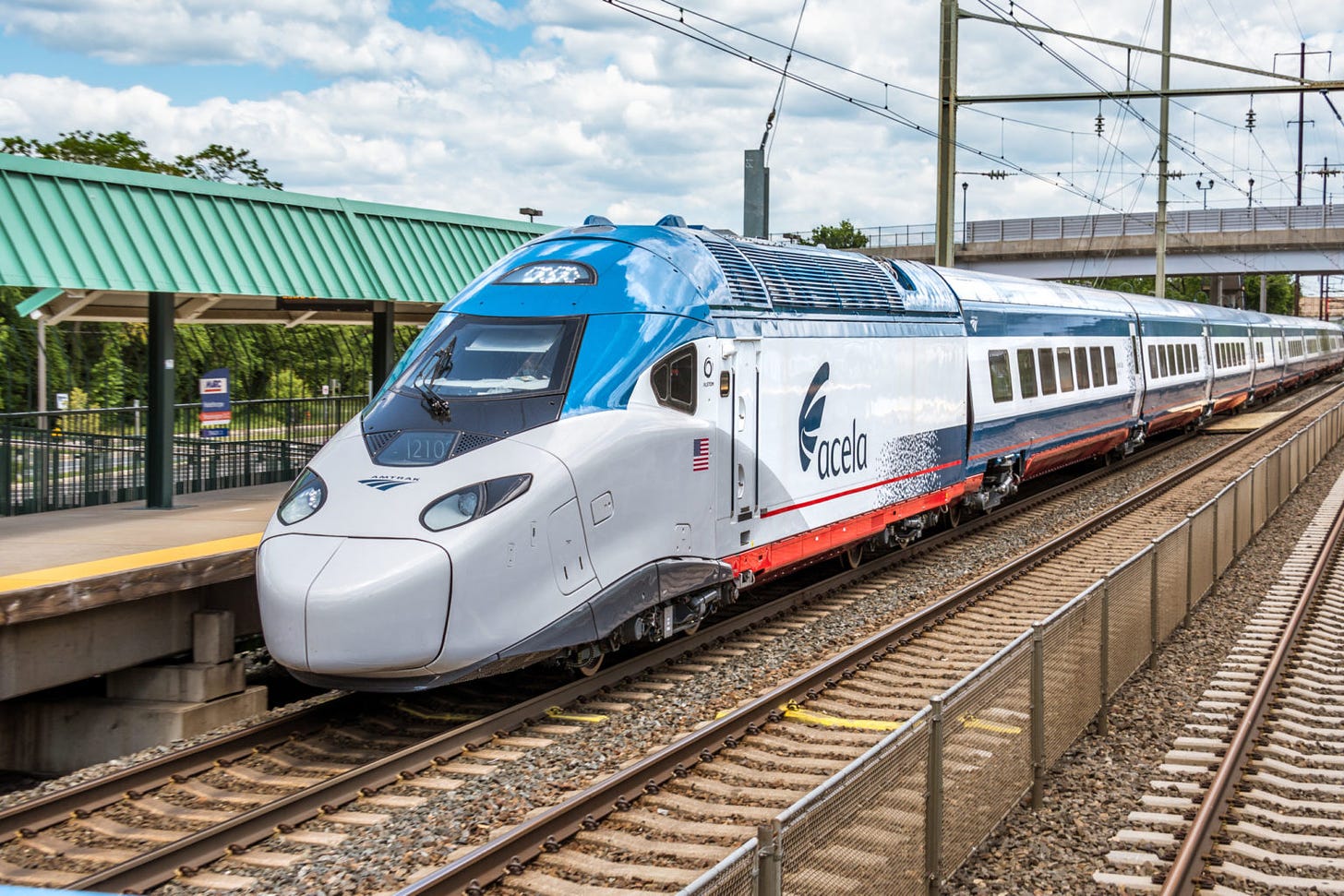
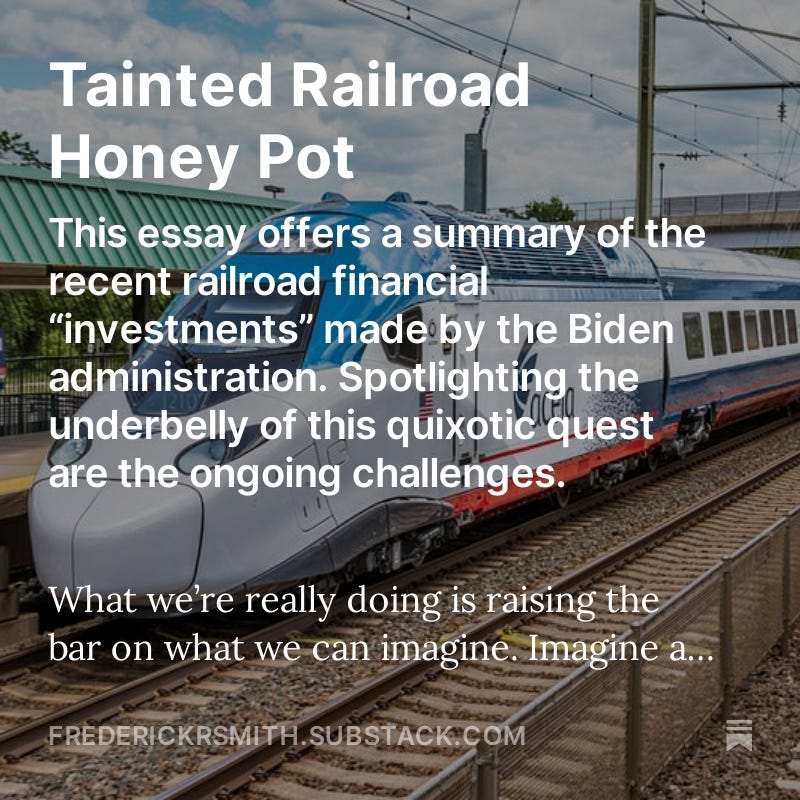
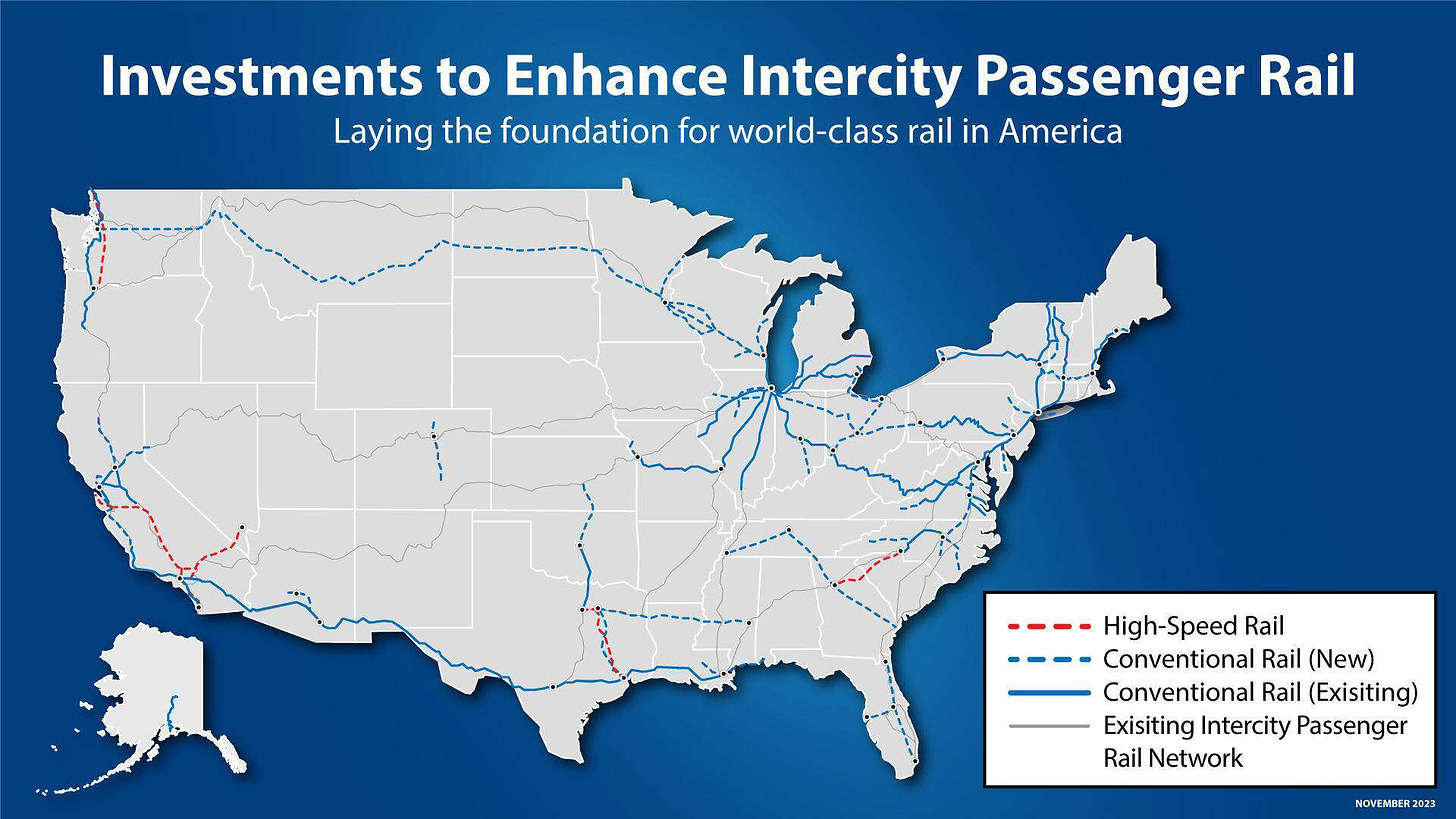
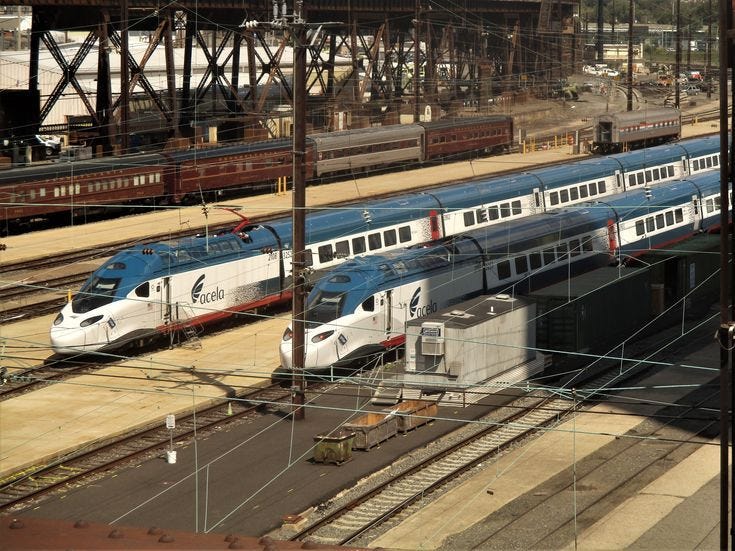
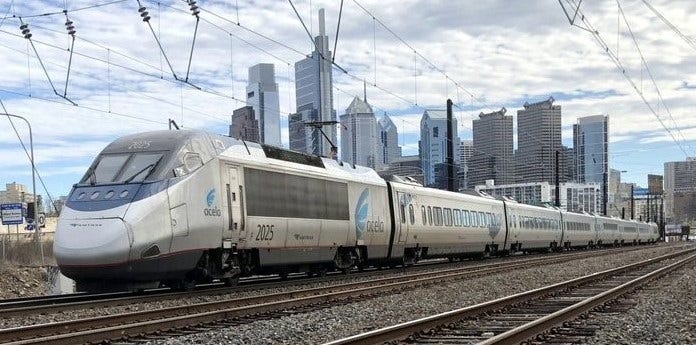
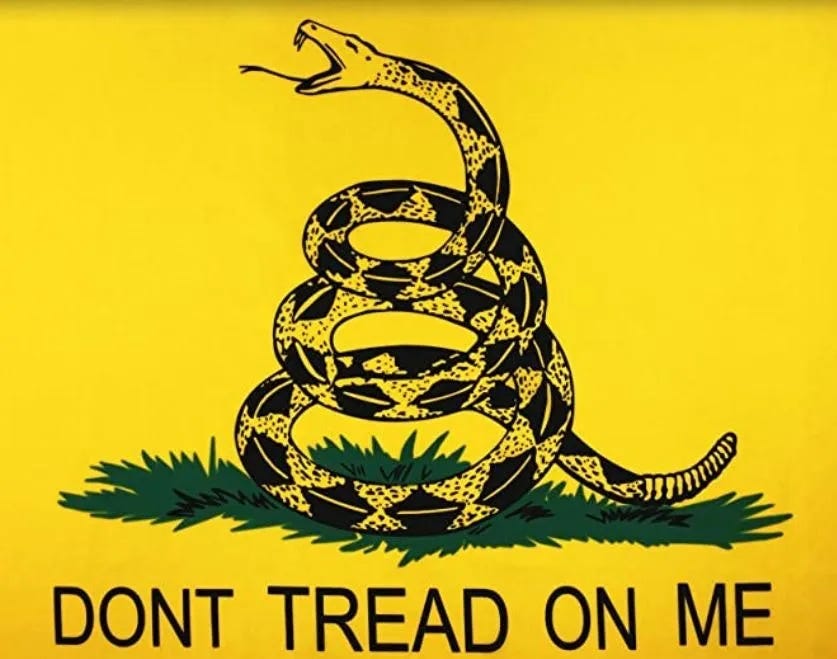
This is an interesting business model for the government. Put regulations in place that prevent anything being built, then allocate money to help the chosen few overcome the regulations. Might there be an opportunity for graft an extortion here?
Waste of the Day: U.S. DOT Spends $3 Billion On Private High-Speed Rail
https://www.thegatewaypundit.com/2023/12/waste-day-u-s-dot-spends-3-billion/